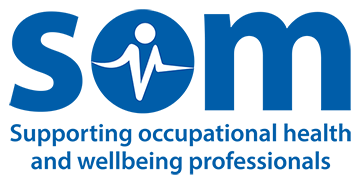
Guest blog for Occupational Health Awareness Week by Ross Clark, Head of Workplace Protection Team, The Institute of Occupational Medicine
Occupational health or medicine and occupational hygiene have long been at the forefront of the challenge to workplace ill-health, often working independently of each other, but sharing a goal to improve upon workplace health for the benefit of the individual and society.
Why is greater collaboration needed?
With an ageing workforce, differing workplace health and safety practices, outsourced or in-house providers, evolving technologies, and changes to working conditions brought about by the pandemic, there is a need to move away from independent working and achieve active collaboration to have a real impact on workers' health and conditions.
Working in silos mean that currently each area be it occupational health or occupational hygiene only has visibility of that piece of the puzzle. An integrated comprehensive clinical and occupational hygiene partnership whereby there is direct communication between the two will allow for a far better understanding of the bigger picture and a greater proactive rather than reactive approach to workplace health and safety.
Improving collaboration between an occupational health practitioner and occupational hygienist is more cost-effective, allowing for the preventative and timely anticipation of disease before it takes hold; and benefitting the workforce.
Regular communication on health screening outcomes prior to carrying out workplace health monitoring and surveying would present a clearer identification of what hazards to assess and subsequently what management tools to use. There would also be greater awareness, again based on health outcomes, as to whether heightened exposure and risk requires urgent occupational hygiene intervention such as assessment of existing controls and additional sampling.
With a greater focus on long term methods, an occupational hygienist can help establish what regular preventative health assessments and screening should take place. Sharing their knowledge and expertise to inform occupational health decisions around:
- Specific hazard exposure assessment and information
- Which hazards would be of particular concern based on established knowledge
- Patterns of exposure in similar workplaces
- Any past potential exposures the workforce may have
- The current controls and monitoring protocols for such hazards
In an industrial context where the risk of occupational lung disease is high and health screening is therefore predominant:
- We as the occupational hygienist operating at the interface of the employee and their workplace, can explain incidences of high exposure to the occupational health practitioner– such as workplaces with little or no use of Local Exhaust Ventilation Systems (LEVS)
- Together we can evaluate the situation to determine what procedures to implement, assign roles and responsibilities and agree to a deadline
- We can then prepare a toolkit for the occupational health practitioner for improving controls and preventing and minimising exposure, that they can discuss with both their clients and patients
- When seeing cases which suggest direct exposure to toxic inhaled substances because of poor controls, we can offer guidance as to why they need professional occupational health and hygiene services, what to expect from them, what questions they should ask, and any current legislation, and protocols they may not be aware of.
Due to the ‘cause and effect’ nature of the relationship, it is vital that occupational health and occupational hygiene work together. Doing so will increase clarity and improve decision making, as well as protecting the workforce in a more effective way.
This is the final guest blog in our series for Occupational Health Awareness Week 2022 (19-24th June). Ross Clark is Head of The Institute of Occupational Medicine’s Workplace Protection team, who use a mix of Ventilation and Occupational Hygiene services to protect hospital patient and workplace employees’ health. A veteran Occupational Hygienist, Ross Clark has been practicing for over 20 years with an in-depth working knowledge of industry issues and has led from the front during COVID-19.

